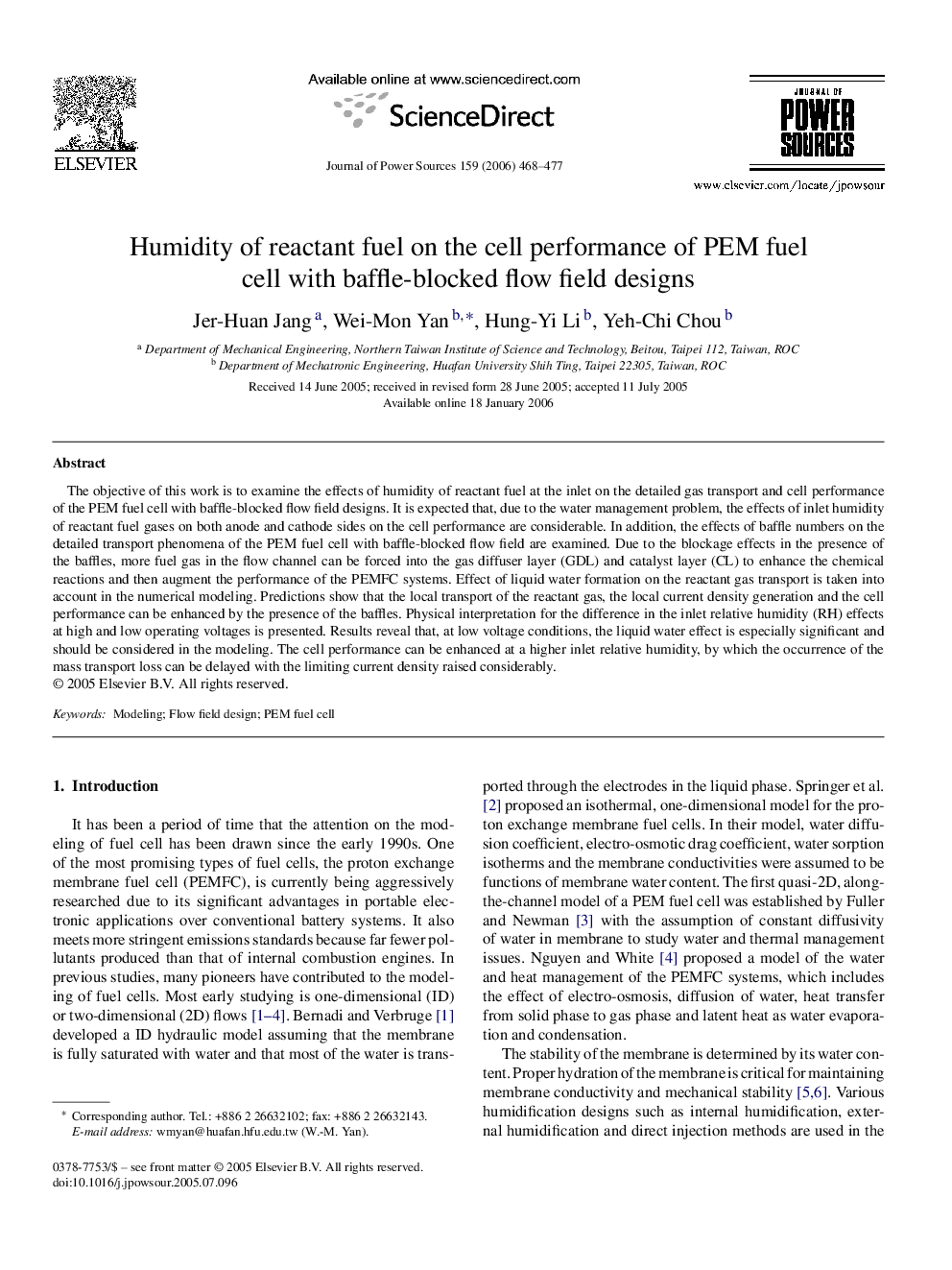| Article ID | Journal | Published Year | Pages | File Type |
|---|---|---|---|---|
| 1292619 | Journal of Power Sources | 2006 | 10 Pages |
The objective of this work is to examine the effects of humidity of reactant fuel at the inlet on the detailed gas transport and cell performance of the PEM fuel cell with baffle-blocked flow field designs. It is expected that, due to the water management problem, the effects of inlet humidity of reactant fuel gases on both anode and cathode sides on the cell performance are considerable. In addition, the effects of baffle numbers on the detailed transport phenomena of the PEM fuel cell with baffle-blocked flow field are examined. Due to the blockage effects in the presence of the baffles, more fuel gas in the flow channel can be forced into the gas diffuser layer (GDL) and catalyst layer (CL) to enhance the chemical reactions and then augment the performance of the PEMFC systems. Effect of liquid water formation on the reactant gas transport is taken into account in the numerical modeling. Predictions show that the local transport of the reactant gas, the local current density generation and the cell performance can be enhanced by the presence of the baffles. Physical interpretation for the difference in the inlet relative humidity (RH) effects at high and low operating voltages is presented. Results reveal that, at low voltage conditions, the liquid water effect is especially significant and should be considered in the modeling. The cell performance can be enhanced at a higher inlet relative humidity, by which the occurrence of the mass transport loss can be delayed with the limiting current density raised considerably.
